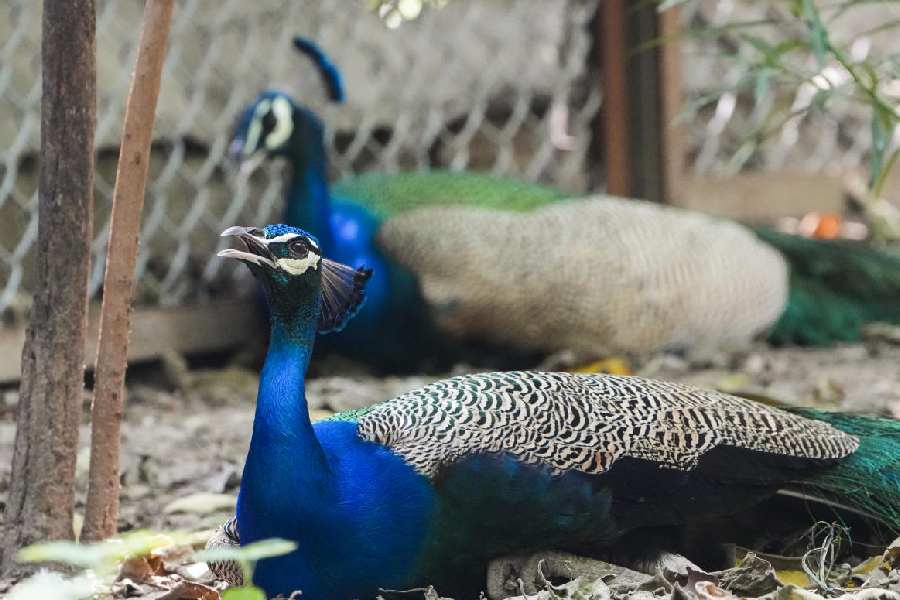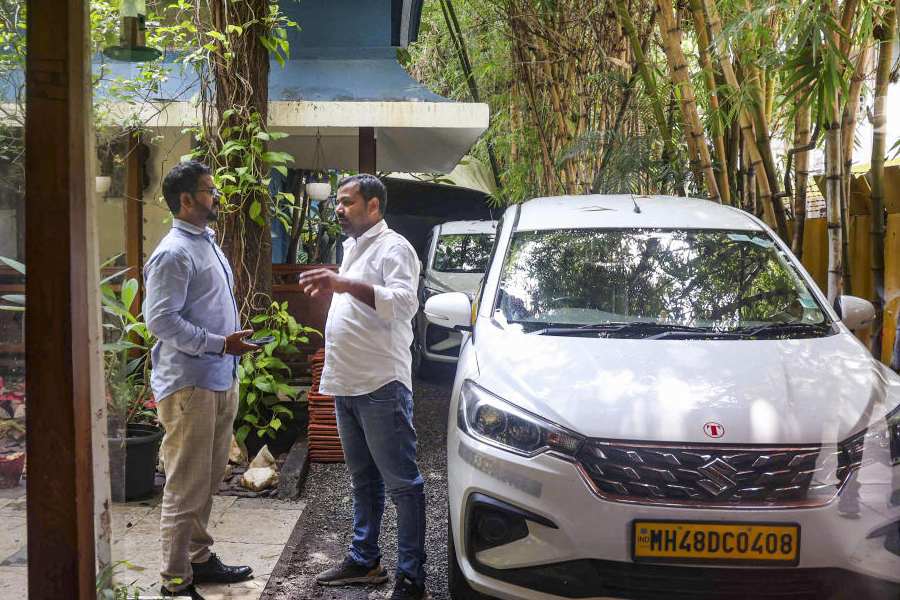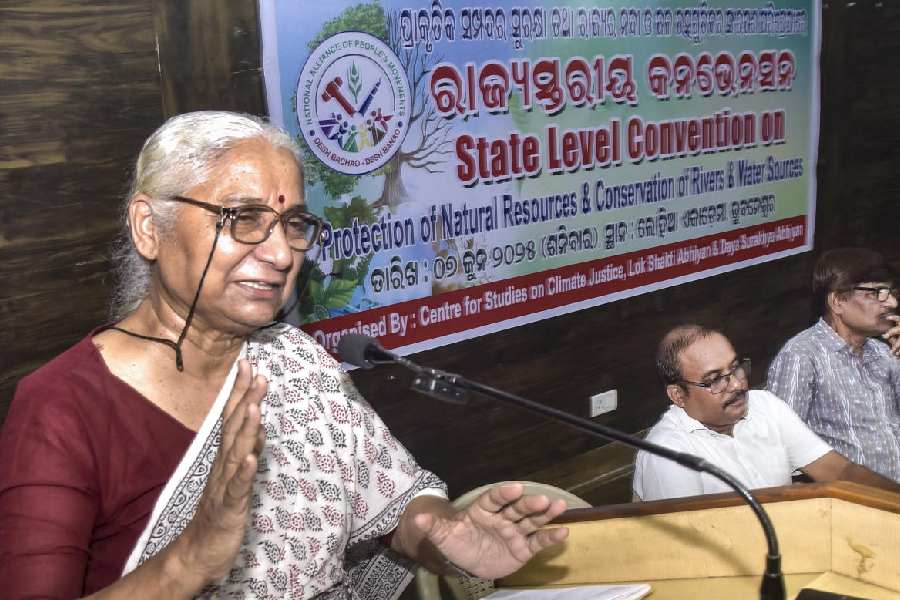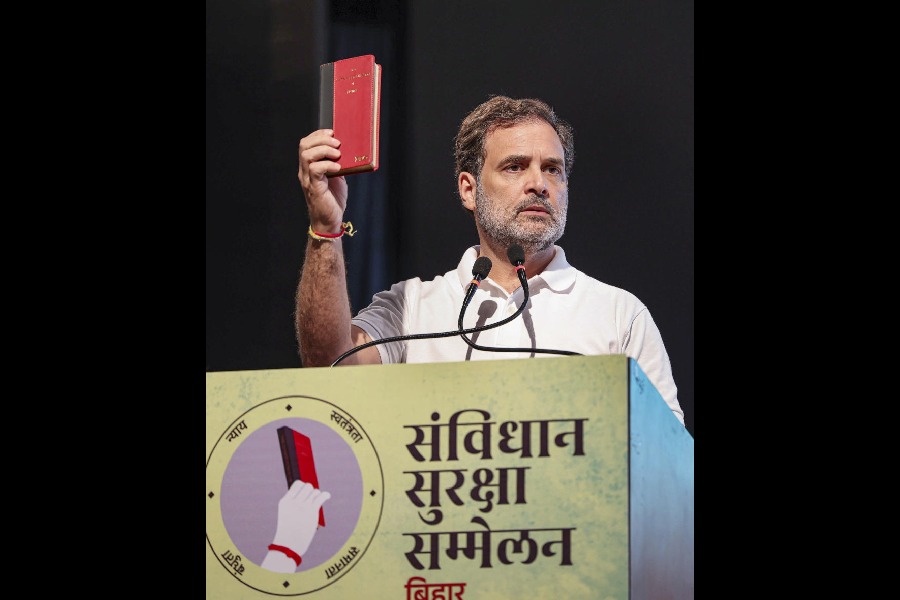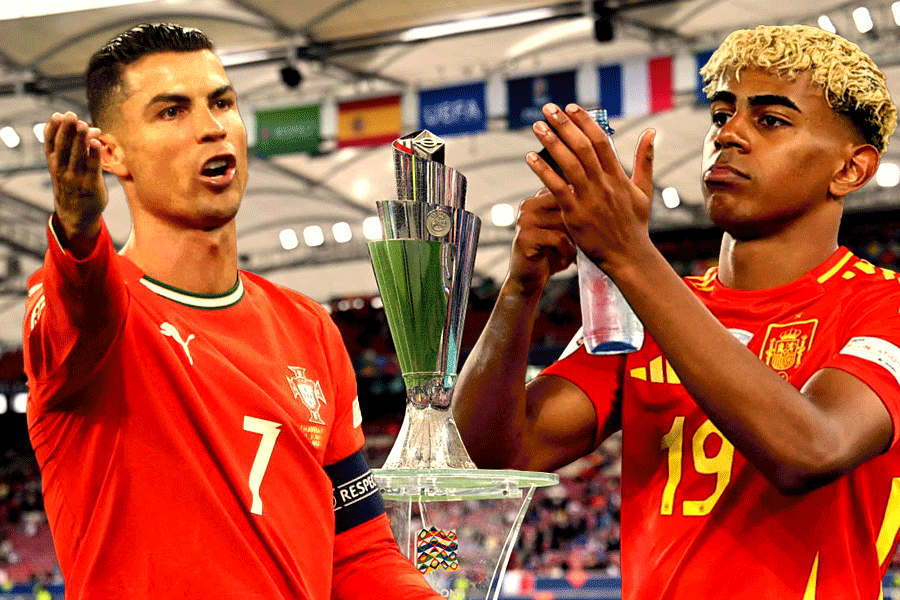 |
| Sayyed Meer Yunus gives final touches to a cutout in Ranchi. Picture by Prashant Mitra |
Ranchi, Dec. 6: A walk down Purulia Road is a lesson in the history of the freedom struggle.
Unfazed by the curious gaze of onlookers, three painters in front of Loyola Institute carve out slices of the past in cardboard and colour.
Life-size cut-outs of Birsa Munda, Sidhu Kanu, Sheikh Bhikari, Tikait Umraon Singh, Ganga Narayan Singh, Phullo, Jhano and the Palamau brothers Nilambar and Pitambar tell their tales of valour from the sidewalks.
Artist Sayyed Meer Yunus sets out early in the morning with his palette to work on portraits. “Most people stop by to see the pictures because there are some leaders about whom people do not know much.”
The cut-outs have been ordered for a rally in the capital by the Gram Swaraj Abhiyan. The life-like pictures are painted on a blue background. The leaders are depicted sporting traditional attire and brandishing ethnic weapons.
Gram Swaraj Abhiyan member Hiralal Gupta said: “We are organising a rally in different districts of the state. The cut-outs of the respective leaders will be distributed to representatives from each district. We are organising a rally on December 22 and are expecting a crowd of 25,000.”
However, the popularity of many of the leaders appears to have dwindled over the years. “I have been in this profession for the past 40 years and I can sketch most of the leaders from memory. However, people do not ask for portraits of Birsa Munda and Sidhu Kanu these days. I had to look up a picture of Ganga Narayan Singh as he relatively unknown,” said Yunus.
Ganga Narayan Singh was the pioneer behind the land distribution movement in Midnapore area. Singh, who is portrayed with a gun on his shoulder, was known for his expertise in the use of firearms.
“In those days, only the British used firearms and not many people knew how to use a gun. Most rebellions were crushed by the superior firepower of the British. People who relied on axes and arrows were easily overpowered,” said Yunus.
The cut-outs of two women, Phullo and Jhano, also find a place. Phullo was a teacher, who spent her life for a mission to educate tribals. Jhano, who was a farm worker, is depicted with a “hasua” (sickle) in one hand and a tuft of paddy in the other.
Nilambar and Pitambar — known as the Palamau brothers — are shown holding a torch and armed with axes. The brothers were a terror in British quarters and are said to have killed many “sahibs”.
The brothers were beheaded and buried in Rai. A memorial has been built at Rai bus stand in honour of the brothers.





